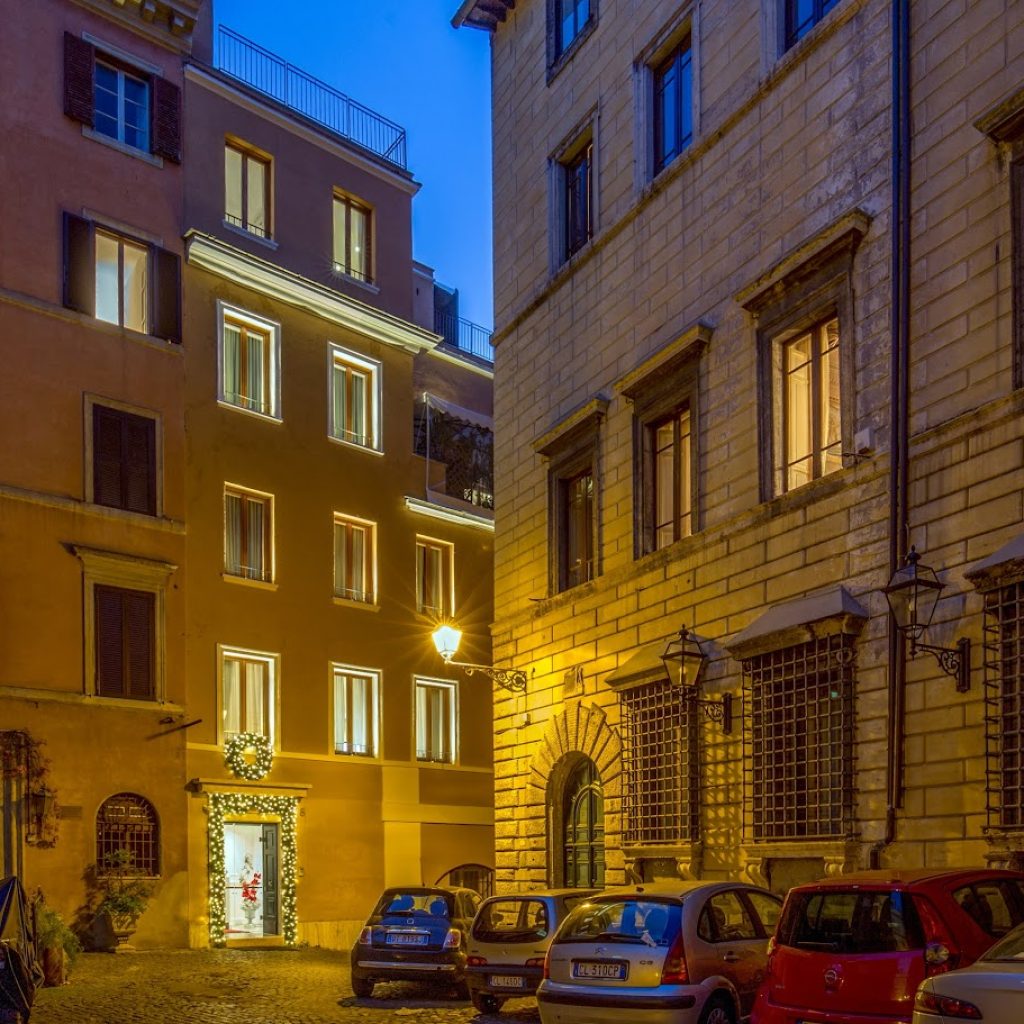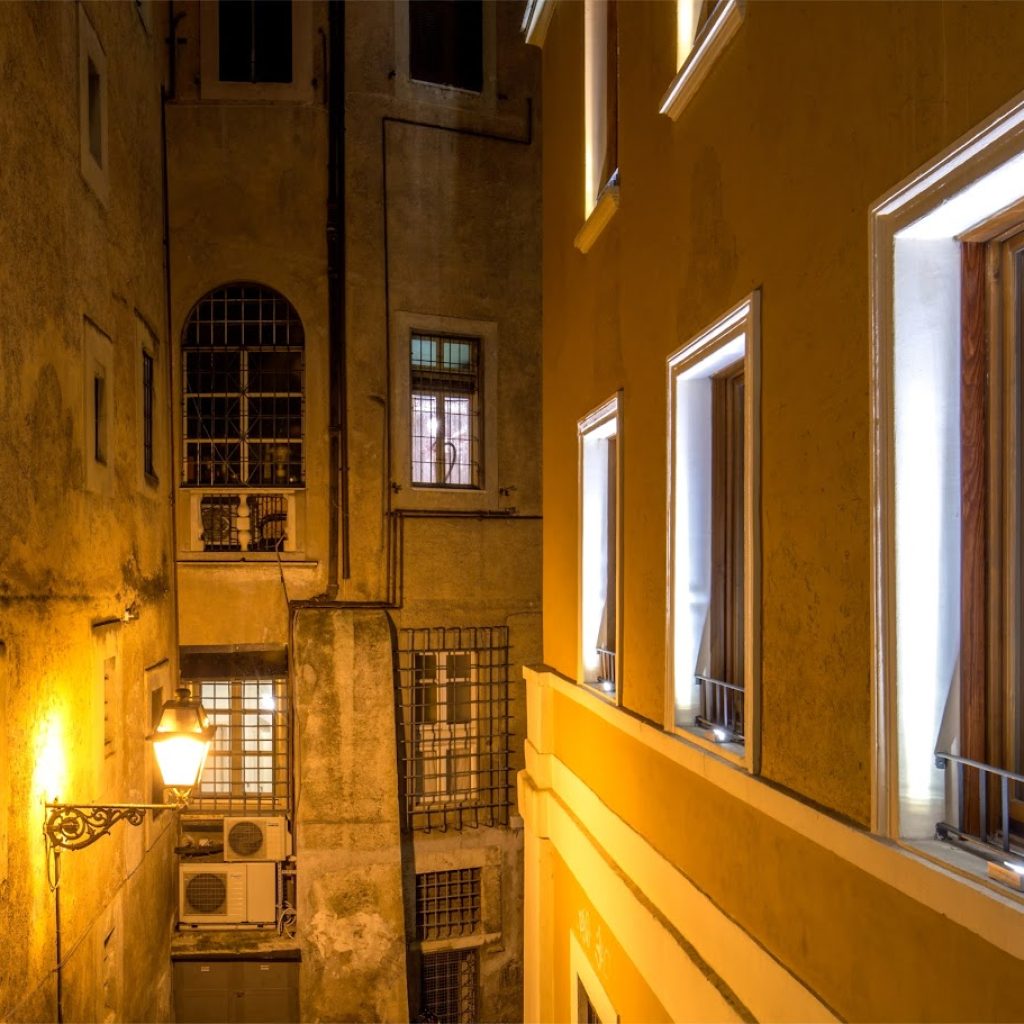At Petrella Salto, two women were assigned as guards, a couple of servants, including a certain Marzio Floriani, called ‘Catalan’, who will then be indicated as one of the perpetrators of the crime, as well as Olimpio Calvetti, faithful castle-follower of the Colonna, who had participated in the famous battle of Lepanto in 1571. Between Beatrice and Olimpio began a relationship that probably lit the girl’s fire to rebel: she began to beg him to kill her father, using in that case, one of the many bandits who roamed the land. In fact Giacomo later returned to Rome after numerous economic difficulties in France, to bring to his troubled sister a fatal dose of opium or other sleep-inducing drugs.
At dawn of the 9th of September 1598, the body of Francesco Cenci is found with his head smashed in the garden below the balcony of the fortress. The parapet of the same balcony had broken and bent outward; a hole in the floor as if one of the planks had given way under the weight of a man. After a quick ceremony in the church, Francesco is buried along with his troubled past. The case was closed and filed as an accident.
Soon after, rumors that the man had been murdered made the authorities re-open the investigation for “fame”, meaning, that the suspicions spread among the people due to the popularity of the topic. After resolving some territorial disputes on jurisdiction issues, as Petrella Salto was in the territory of the Kingdom of Naples, the investigation revealed a series of disturbing circumstances. Evidence surfaces of the sheets and the mattress of Francesco’s bed which were abundantly soaked with blood; they make sure that the size of the hole in the balcony is so small that the voluminous body of a man would have barely passed, even if it was, the small size of the passage would have easily allowed the unfortunate to cling to the iron railing which however was folded inward and not outward.
The Catalano is arrested first, stripped and taken to the torture room by the inquisitors of the Papal States, under the procedure known as the “territio”, which is intended to terrorize the accused with the threat of execution. The sight of the torture instruments ready to be used are enough to convince the poor man to tell everything word for word, of how the two women lived in a state of unjust imprisonment, the harassment suffered by the tyrannical Francesco, of the violence suffered, suggesting that Beatrice’s father had also sexually abused her. From there on the idea was born to stun him with drugged wine, and finish him off with a club and discard the body below to simulate an accident. But nothing went their way: the opium was not enough to put Francesco to sleep, and the murder lasts a considerable time; not only was he bludgeoned to death, but they stuck a nail in his eye to finish it off.
The inquisitors now have a confession, the best sort of evidence. The two women and the other accomplices are imprisoned in Castel Sant’Angelo. However, Beatrice continues to deny her guilt, as she believed they would could get away with it: neither she nor her brother Giacomo may be subjected to torture as a member of a noble family. The Catalano is subjected to torture, with her present, and shortly after the unfortunate man dies. Beatrice and Lucrezia still deny their guilt, certain of the important support of the Papal Court. Unfortunately, belying their hopes, no one shows up. One exception, their friend orders the murder of Olimpio Calvetti to avoid a further confession. The murder of the accused villain makes the judges feel scorned, which makes the imprisonment of the two women even more strict, and the brother of Calvetti undergoes prolonged torture. The decisive act is, however, issued by Pope Clement VIII; in August 1599, after months of investigation and imprisonment, “exudes a motu proprio” (decision of “own initiative”) he authorizes the court to torture the two Cenci sisters, deeming them guilty anyway.
Giacomo Cenci, Beatrice’s brother, was subjected to prolonged torture of the rope, he confesses, however, attributing all the blame to the deceased Olimpio. A few days later, the younger brother Bernardo confesses. It is the time of Lucrezia: a sign of respect is subjected to torture without being stripped and shaved, as procedure craved those days. She also confesses: she attributes the blame on Beatrice and Olimpio.
On 10th August it is finally Beatrice’s time. The judge immediately treats her in a rude manner, admonishing her, but she continues to deny the facts. The judge tries to help her, telling her to be aware of the violence which she suffered, trying to get her to confess and that the penalty will not be very hard. Beatrice insists on her version of the facts. Finally, even her brothers, Giacomo and Bernardo, are tortured before her eyes to make her confess, and then she herself was hung: only then does she give in.



